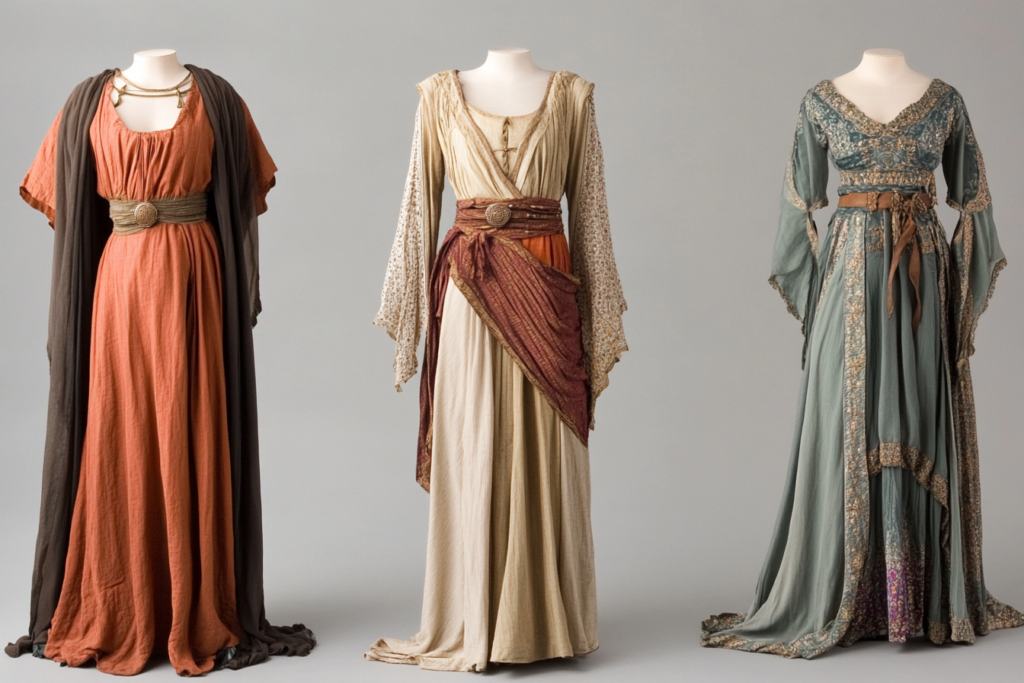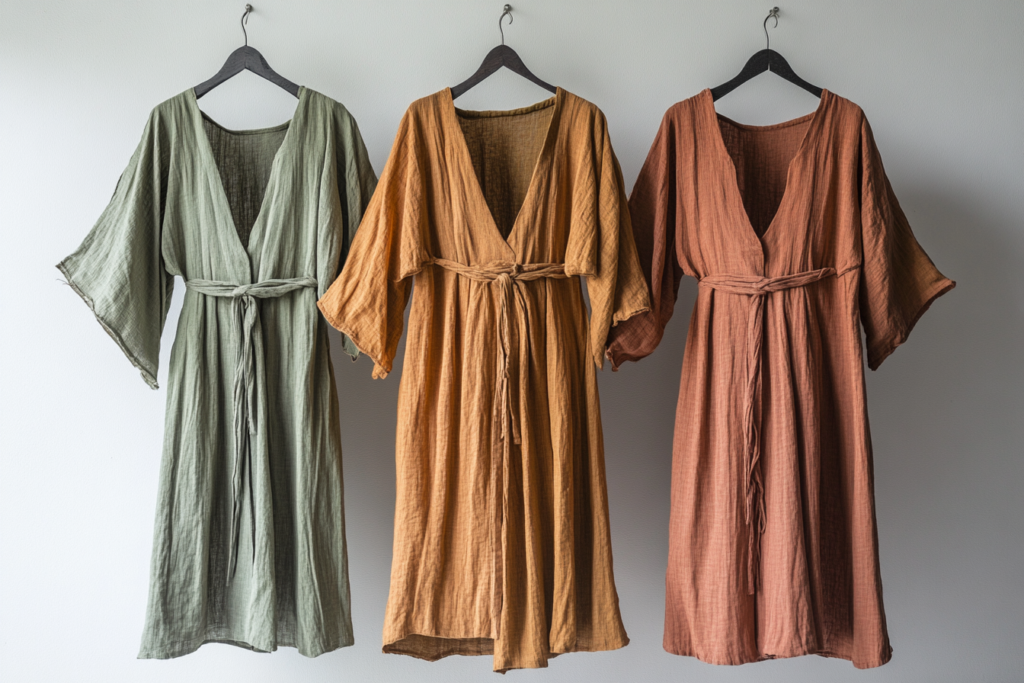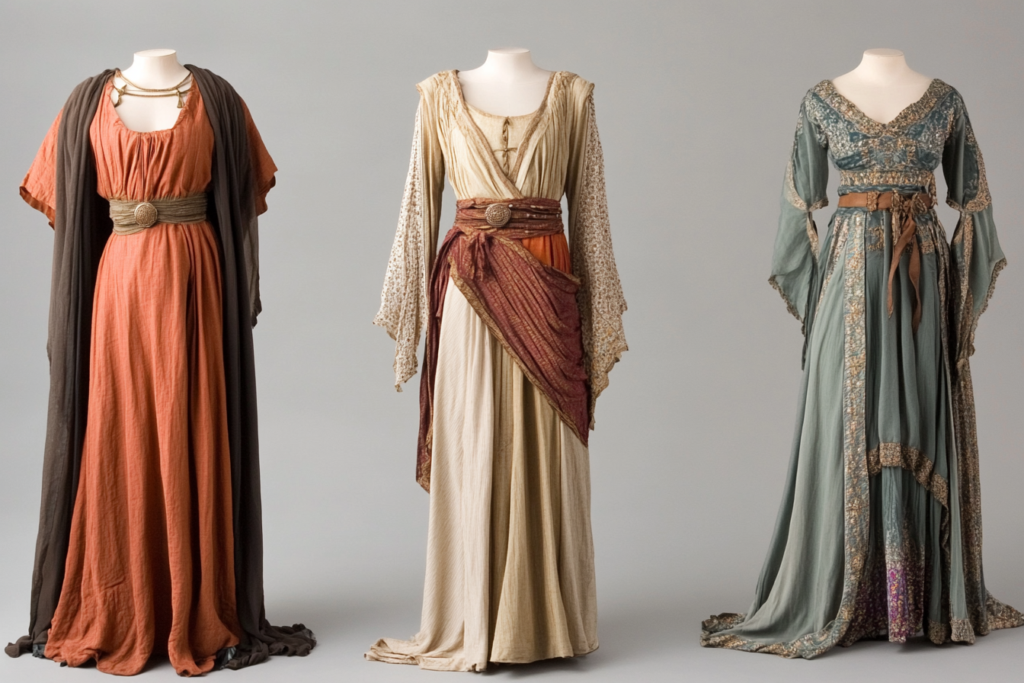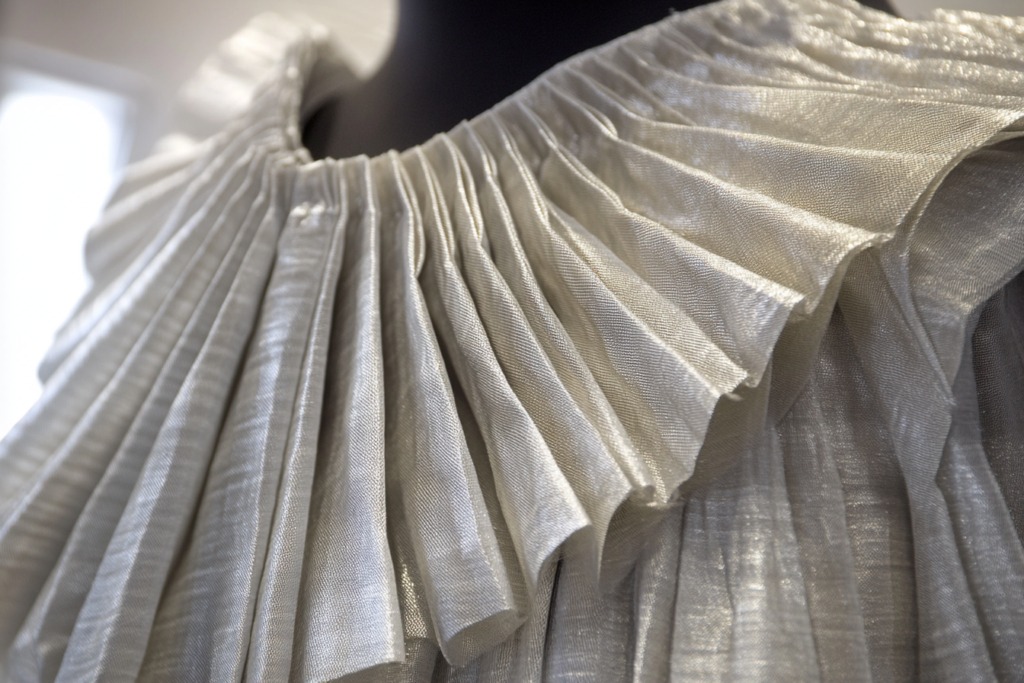Tunic Dress: A Versatile Garment with Ancient Origins
Meta Description: The tunic dress is a timeless garment with ancient origins, characterized by its loose fit and long length. Learn about its history, variations, and how it is styled today.
What is a Tunic Dress?
A tunic dress is a loose-fitting, often knee-length or longer garment, traditionally worn as a simple, functional piece of clothing. The tunic originated in ancient civilizations, such as the Greeks, Romans, and Egyptians, where it was worn by both men and women. Over time, it has evolved into a popular fashion item, often associated with boho-chic styles or ethnic wear.
The tunic is typically characterized by a straight cut, relaxed fit, and minimal shaping, making it comfortable and versatile for everyday wear. It can be paired with a variety of accessories or layered with belts, jackets, and skirts to create different looks.


📌 Key Features of a Tunic Dress:
- Loose Fit: Tunics are known for their relaxed, flowing silhouette.
- Length: They typically reach the knee or extend to the mid-calf or ankle.
- Versatility: Tunic dresses can be worn with a belt, layered with accessories, or paired with skirts or pants.
- History: Rooted in ancient fashion, it continues to be a popular style today.
History of the Tunic Dress
The tunic dress has its roots in ancient civilizations. Its simple design made it an ideal garment for everyday life. Here’s a brief look at its history:
📌 Ancient Civilizations:
- Greeks and Romans: The tunic was a common garment in both Greek and Roman cultures. It was often worn by both men and women, typically made from wool or linen, and was belted at the waist.
- Egyptians: In ancient Egypt, the tunic was worn as a basic form of clothing, often made from linen due to the hot climate.
📌 Medieval Times:
- In medieval Europe, the tunic was worn as a basic undergarment beneath armor or as outerwear for daily activities. During this time, tunics were more structured, often made from wool, and were worn with layers of other garments.
📌 Modern Times:
- The tunic has evolved into a fashionable garment in modern times, with bohemian and ethnic-inspired designs taking prominence. Today, tunic dresses are made from various fabrics such as cotton, silk, and polyester and are commonly seen in casual wear and summer wardrobes.
Styling a Tunic Dress
A tunic dress can be styled in many ways to suit different occasions, from casual wear to semi-formal settings. Below are some popular ways to wear a tunic dress:
📌 With a Belt:
- Adding a belt to a tunic dress can help define the waist and give the dress more shape. A wide belt can create a more structured look, while a skinny belt can add a subtle detail.
- Ideal for: Day-to-night transition, casual wear, or boho-chic looks.
📌 With Leggings or Tights:
- Pairing a tunic dress with leggings or tights creates a comfortable and stylish look. This combination is great for cooler weather or more casual outings.
- Ideal for: Casual daywear, travel, or relaxed outings.
📌 Layered with Jackets or Cardigans:
- For a more polished look, tunic dresses can be layered with jackets, blazers, or cardigans. Adding a light scarf or a statement necklace can also elevate the outfit.
- Ideal for: Office wear, semi-formal gatherings, or weekend outings.
📌 With a Separate Skirt:
- A shorter tunic dress can be paired with a separate skirt to create a more layered look. This pairing adds volume and texture, which can be perfect for a boho or ethnic look.
- Ideal for: Special occasions, festivals, or bohemian looks.
Benefits of a Tunic Dress
📌 Comfort
- The loose fit of the tunic dress provides maximum comfort, making it ideal for warm weather and casual wear.
📌 Versatility
- A tunic dress can easily be dressed up or down, allowing for versatility across different settings.
📌 Breathability
- Tunic dresses are often made from breathable fabrics such as cotton, linen, or rayon, making them perfect for summer wear.
📌 Timeless Style
- The tunic dress has remained fashionable for centuries, offering a timeless look that can be adapted to modern trends.
Tunic Dress Variations
| Type of Tunic Dress | Description | Ideal Fabric | Ideal Use |
|---|---|---|---|
| Long Tunic Dress | A full-length tunic that offers a flowing silhouette. | Linen, Cotton | Casual wear, beachwear, summer days |
| Short Tunic Dress | A knee-length tunic often paired with leggings or a skirt. | Cotton, Jersey | Casual outings, boho-chic looks |
| Embellished Tunic | Tunics decorated with embroidery, beads, or sequins. | Silk, Rayon | Special occasions, festivals |
| Fitted Tunic Dress | A more structured version with a belt or tailored seams. | Wool, Polyester | Office wear, semi-formal gatherings |
Illustration of Tunic Dress
Here is an illustration showing the tunic dress and its variations, including how it is styled with belts, skirts, and leggings. This diagram will help you visualize the different styles and lengths of tunic dresses.
Conclusion: The Timeless Appeal of the Tunic Dress
The tunic dress is a timeless and versatile garment that has evolved through the ages, from its ancient roots to modern-day fashion. Its loose fit, comfort, and wide range of styling options make it a wardrobe staple for many. Whether worn with a belt, layered with accessories, or paired with a skirt or leggings, the tunic dress is suitable for a variety of occasions and seasons.



